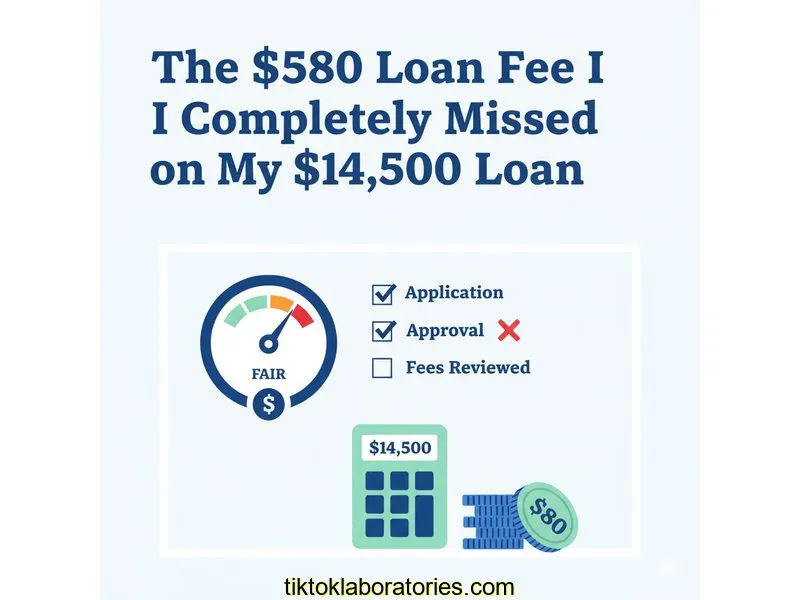
Auto Loan Calculator
Calculate payments over the life of your Loan
Home Blog Privacy Terms About Contact
Calculate payments over the life of your Loan
Home Blog Privacy Terms About ContactPublished on October 12, 2025

It started with a feeling of being completely swamped. Every month, I was juggling three different credit card payments, each with its own due date, its own website, and its own sky-high interest rate. The mental energy it took to track everything was exhausting, and I felt like I was running on a financial treadmill, making payments but never making real progress. The total was around $14,500, a number that kept me up at night.
One evening, after staring at my pile of statements, I had what felt like a brilliant idea: debt consolidation. Why not roll all of that high-interest debt into a single personal loan? One payment, one interest rate, one clear path to being debt-free. It sounded so beautifully simple. How hard could it be to find a loan?
My initial confidence was, in retrospect, incredibly naive. I dove into online searches, focusing on only two things: a low interest rate and a monthly payment that fit my budget. I figured if those two numbers looked good, everything else was just minor details. I wasn't a financial expert, but this felt like basic math. My goal was simplicity, and I let that desire for an easy answer cloud my judgment.
Within a few days, I found what I thought was the perfect offer. It was a 48-month loan for the full $14,500 at what seemed like a great rate of 11.99%. The monthly payment was calculated to be around $385, which was less than what I was paying combined on my cards. The website even had a big, friendly banner that said, "Simple Loans, No Hidden Fees." I felt a wave of relief wash over me. This was it. This was my solution. I filled out the application, uploaded my documents, and felt a surge of pride. I was finally taking control. Little did I know, my rush for simplicity was about to teach me a very expensive lesson. This is my personal experience, and I'm sharing it not as financial advice, but as a cautionary tale from my own journey.
The approval email arrived just two days later. "Congratulations! Your loan has been approved and funded," it read. I felt a genuine sense of accomplishment. I had identified a problem, found a solution, and executed it. I logged into my bank account, eagerly waiting to see the $14,500 deposit so I could begin the satisfying process of paying off each credit card to zero.
And that’s when my stomach dropped. The deposit was there, but the number was wrong. It wasn’t for $14,500. It was for $13,920. I blinked, refreshed the page, and checked again. The number remained stubbornly the same. A cold knot of panic started to form in my chest. Where was the rest of the money? Was it a mistake? Would the rest be deposited later?
My mind raced through the possibilities, none of them good. I immediately started digging through my emails, frantically searching for the loan agreement I had digitally signed just days before. I remembered skimming it, looking for the loan amount and the interest rate, but now I was reading it with the intensity of a detective. I scrolled past pages of legal jargon, my eyes scanning for any mention of deductions or withholdings.
And then I saw it. Buried in a dense paragraph under a sub-heading titled "Loan Costs," was a single sentence that made my heart sink: "A non-refundable origination fee of 4.00% of the total loan amount will be deducted from the loan proceeds prior to disbursement." My eyes went wide. Four percent. I quickly did the math on my phone: 4% of $14,500 is exactly $580. The missing money wasn't a mistake; it was a fee. A fee I had completely and totally overlooked. The marketing said "No Hidden Fees," but in my personal experience, this felt pretty hidden to me. I was now short $580 of what I needed to pay off my debts, and I was still on the hook to repay the full $14,500, plus interest. The feeling of being in control evaporated, replaced by a frustrating sense of having been outsmarted.
That initial shock and frustration quickly turned into a determination to understand what had just happened. This wasn't just about the $580; it was about the principle. I felt like I had failed my first real test of financial diligence. I spent the next week dissecting every piece of paper I had from the lender and diving into online resources to learn the vocabulary of lending. I learned that an "origination fee" is a charge by the lender for processing a new loan application, often used to cover the costs of underwriting and funding. And, most importantly, I learned the critical difference between a simple interest rate and the Annual Percentage Rate (APR).
The 11.99% rate I was so proud of was just the interest on the money borrowed. The APR, which I now know is the far more important number, includes that interest plus any fees, like my surprise origination fee, expressed as an annualized rate. My loan's real cost, the APR, was actually closer to 13.5%. Realizing this was a painful but incredibly valuable lesson. It forced me to create a new system for myself, a way to ensure I would never make this mistake again.
My first step now is to completely disregard the big, bold interest rate shown in advertisements. In my experience, it's often a marketing tool. I've learned it doesn't tell the whole story of what the loan will actually cost me.
I immediately search for the Annual Percentage Rate (APR). This is the key number. By law, lenders must disclose it. I know that the APR gives me a much more accurate picture of the loan's cost because it factors in both the interest rate and most of the fees.
I now treat the loan agreement like a contract I'm signing for a new job—because it is a job for my money. I specifically use the "find" command (Ctrl+F) on the digital document to search for keywords like "fee," "origination," "penalty," and "charge." This helps me cut through the jargon and find exactly what extra costs are involved.
If there's an origination fee, I now do the math upfront. I calculate the fee amount and subtract it from the total loan amount. This tells me exactly how much cash will land in my bank account, so I know if it's enough to cover my needs without any surprises.
Finally, I use an online loan calculator to model the total cost of borrowing over the entire loan term for each offer I'm considering. By inputting the loan amount, APR, and term, I can see the total amount of interest and fees I'll pay. This allows me to compare offers on a true apples-to-apples basis, something I completely failed to do the first time.
While I couldn't undo the loan I had taken, this new process gave me a powerful sense of control. I had to pull the $580 from my emergency savings to cover the credit card shortfall, which was painful. But the real result was the education. The frustration of that mistake transformed into a system that I know will protect me from similar, or even more costly, errors in the future.
Going through this experience was stressful, but it forced me to develop a much healthier skepticism and a more meticulous approach to my finances. I created a mental checklist that I now run through before even considering a financial product. This is just what I do personally; what works for you might be different, and it's always a good idea to consult a professional.

Looking back, I've had a lot of time to reflect on my mistake. Asking myself these questions has helped solidify the lessons I've learned. Again, these are my personal reflections, and your situation will always be unique.
To me now, it's simply the lender's fee for the service of creating the loan. I think of it like a commission they pay themselves out of my loan money. It's not inherently good or bad, but it's a cost that absolutely must be factored into any loan comparison.
Honestly, by being more patient. I was in such a hurry to solve my debt problem that I looked for shortcuts. If I had taken just one hour to slowly read the entire loan agreement before signing, instead of just skimming for the numbers I wanted to see, I would have found it. The information was there; my process was flawed.
In my research, I found that the APR is legally required to include origination fees, discount points, and other prepaid finance charges. So yes, the APR did reflect the fee. My mistake was that I completely ignored the APR and focused only on the lower, more attractive "interest rate." I didn't understand the difference, and that's what cost me.
This is the big one. After this happened, I went back and looked at other offers I had considered. I found one from another lender with a slightly higher interest rate (12.5%) but zero origination fee. When I ran the numbers, its total cost over 48 months would have been about $300 less than the loan I took. It was a painful realization, but a powerful lesson in the importance of comparing total cost.
If I could distill this entire stressful, expensive, and ultimately educational experience down to a single piece of wisdom for myself, it would be this: the monthly payment is not the price tag. The true price tag of any loan is the total amount of money you will have paid by the time the balance is zero. Focusing on a low monthly payment is a classic tunnel-vision mistake that can cause you to overlook thousands of dollars in long-term costs and fees.
I was so focused on easing my short-term monthly cash flow that I signed up for a deal that was objectively worse in the long run. The relief I felt was temporary, but the knowledge I gained is permanent. Now, I approach any financial decision with a healthy dose of patience and a magnifying glass for the fine print.
If my story can help even one person slow down, read one more paragraph in their loan document, and ask one more question before they sign, then sharing this embarrassing mistake will have been worth it. You are your own best advocate in these situations. Remember, this is just my personal story. Always consult with a qualified financial advisor for your specific situation.
Disclaimer: This article documents my personal experience with a loan application/process. This is not financial advice. Your own situation, creditworthiness, and loan options will differ. Always consult with a qualified financial advisor, review all loan documents carefully, and compare multiple lenders before making any financial decisions. Loan terms, rates, and fees vary by lender and borrower qualifications.
About the Author: Written by Alex, someone who has navigated personal loans, made mistakes, and learned from them over 8+ years of managing personal finances. I'm not a financial advisor or loan officer—just someone sharing personal experiences to help others avoid the mistakes I made. Always seek professional financial guidance for your specific situation.